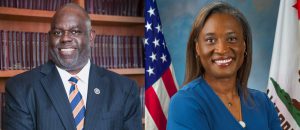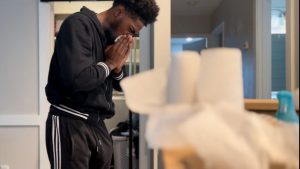
Diamond Jenkins
Blue & White Flash / Staff Writer
This year marks the 42nd anniversary of the May 14, 1970 shooting, which took the lives of Phillip Gibbs and James Green on the campus of Jackson State College. Bullet holes can be seen on the brick walls outside of Jackson State University’s freshman dormitory, Alexander Residence Hall.
Many students walk across the Gibbs-Green Pedestrian Walkway daily to and from class and attend the many hotspots held there, but do not know the history behind the name and its impact on civil rights and the University’s history.
Each year, Jackson State pauses to remember the decades-old shooting. This year’s memorial will be held April 19-20.
“This memorial is used to heighten the awareness of the 1970 shooting, which happened at Alexander. It is also intended to take a deeper look at the dynamics that contributed to the bloodshed of Phillip Gibbs and James Green in which they paid a sacrifice,” said Jean Frazier, Coordinator of Community and External Affairs at Jackson State. “The main components of this year’s memorial service will be student driven and centered around higher education.”
Students think the yearly memorial service is a good way to keep the campus history alive.
Mercedes Williams, a freshman psychology major from Vicksburg, Miss. said, “I knew of the [1970] shooting, but I really had no idea that everything happened right here. I’ve heard the stories, but it was not clear to me of how critical the situation was.”
Dominick Sanders, a senior computer science major from Glen Carbon, Ill. said, “Protesting for equality was the backbone of the Civil Rights Movement. Gibbs and Green became sacrificial lambs for a worthy cause. Their murders were a defiant act by the police to temporarily halt the protests. Students should know about the shootings because it is a significant part of history as well as Jackson State University. The bullet holes can still be seen in Alexander Hall and the plaza bears the names of these two young men.”
According to the April 29, 2010 issue of The Blue & White Flash, Mamie Crockett, an instructor at JSU during that tragic time understands the history that proceeded the tragic event. Crockett, who had been struck by a car in 1964 while crossing the bisected campus said that the students started rioting and they wouldn’t allow any traffic to pass through the campus because the city would not honor their request for a traffic light. They began to receive slow progress from the city with each riot.
Gibbs and Green were killed after police fired into a crowd of students. Twelve other Jackson State students were struck by the more than 30-seconds of gunfire, including some who required treatment for shock and injuries from shattered glass. The injured included Fonzie Coleman, Tuwaine Davis, Climmie Johnson, Leroy Kenter, Gloria Mayhorn, Andrea Reese, Patricia Ann Sanders, Stella Spinks, Lonzie Thompson, Vernon Steve Weakley, Redd Wilson, Jr. and Willie Woodard.
This happened only 10 days after National Guardsmen killed four students at Kent State University, which captured immediate attention.
Under the leadership of Jacob L. Reddix, the fifth president of Jackson State, students began an annual riot to obtain the traffic light they initially requested.
More details on the memorial program will be announced in March.




Be First to Comment